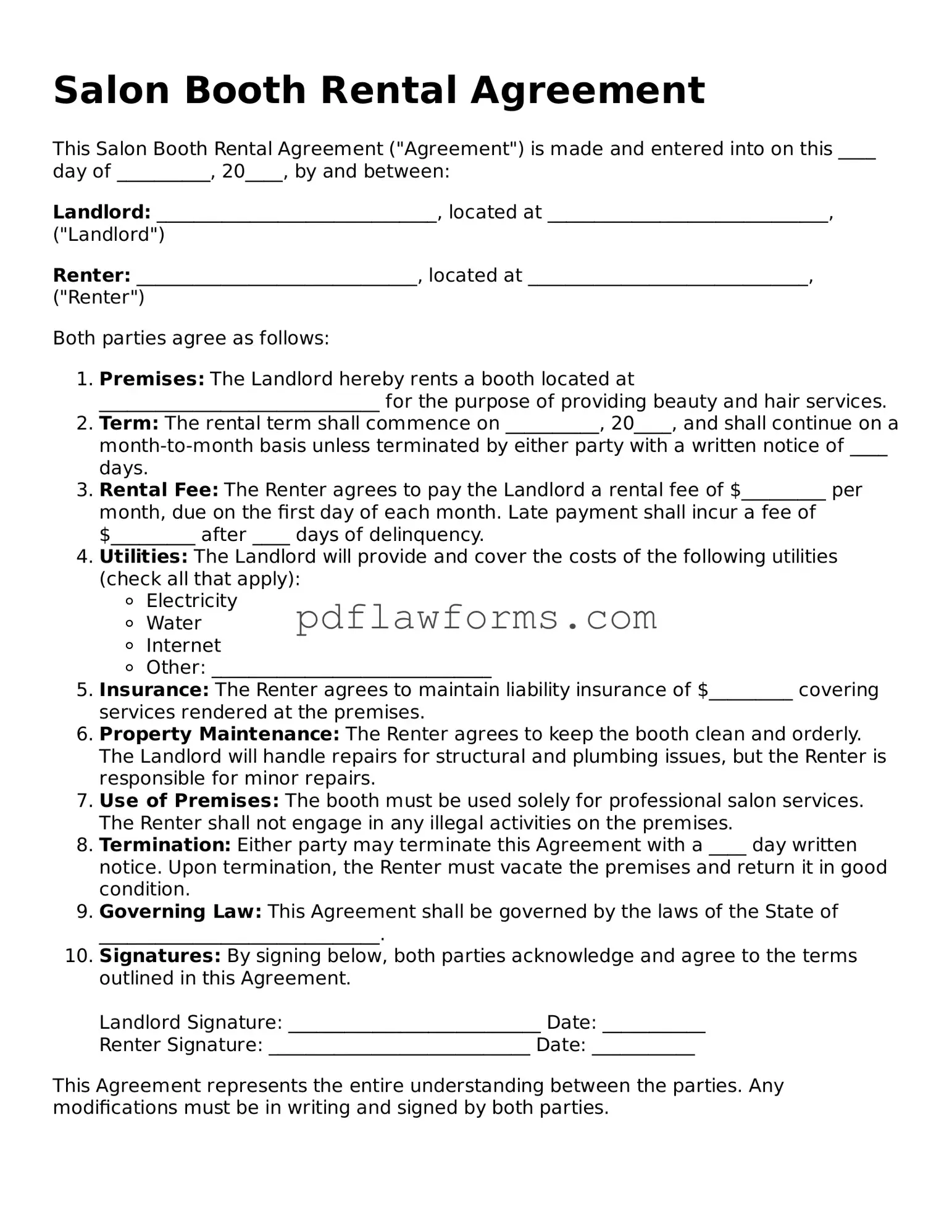Filling out a Salon Booth Rental Agreement can be straightforward, but many individuals make common mistakes that could lead to misunderstandings or legal issues. One frequent error is not reading the entire agreement before signing. This oversight can result in missing critical details about rental terms, fees, and responsibilities.
Another mistake is failing to provide accurate personal information. Incorrect names, addresses, or contact details can complicate communication and lead to disputes down the line. It’s essential to double-check all entries to ensure they are correct.
Some people neglect to clarify the rental duration. Not specifying whether the agreement is for a short-term or long-term rental can lead to confusion regarding payment schedules and obligations. Clear timelines help both parties understand their commitments.
Additionally, many overlook the importance of understanding the payment terms. Some might assume they know the fees involved without thoroughly reviewing them. This can lead to unexpected costs or missed payments, which may jeopardize the rental arrangement.
Not discussing the terms of maintenance and utilities is another common mistake. Renters should clarify who is responsible for cleaning, repairs, and utility bills. Failing to do so can create tension between the salon owner and the booth renter.
People also often forget to include specific details about the use of shared spaces. Whether it's break rooms or waiting areas, defining how these spaces can be used prevents conflicts among renters.
Another pitfall is not addressing the issue of insurance. Many renters assume they are covered under the salon's policy without confirming. It’s crucial to understand what insurance is required and whether personal coverage is necessary.
Some individuals skip over the termination clauses in the agreement. Knowing how to end the rental relationship, including notice periods and conditions, is vital. This knowledge can prevent potential legal issues later.
Moreover, failing to keep a copy of the signed agreement is a significant oversight. Having a personal copy ensures that both parties can refer back to the terms if any disputes arise.
Lastly, not asking questions when something is unclear can lead to misunderstandings. Open communication is key. If something in the agreement doesn’t make sense, it’s important to seek clarification before signing.
